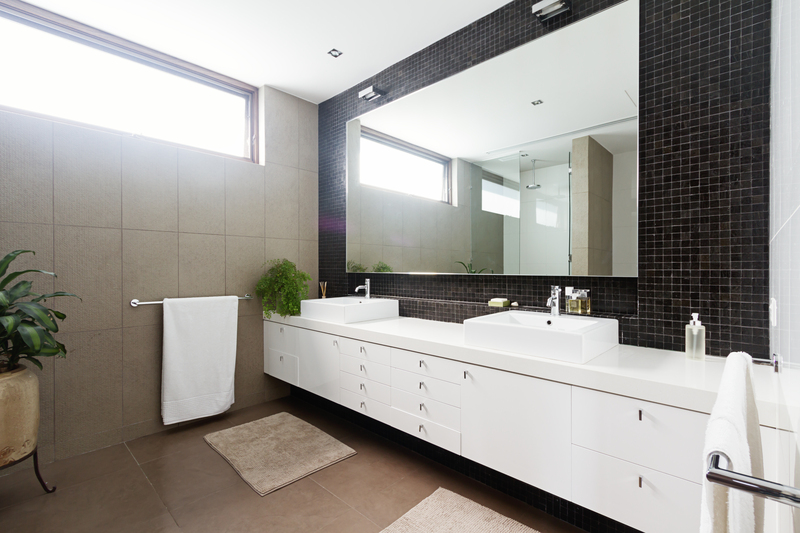Master the Art of Stovetop Cleaning: Banish Burnt-On Messes
Posted on 26/05/2025
Master the Art of Stovetop Cleaning: Banish Burnt-On Messes
Your stovetop is the culinary centerpiece of your kitchen, but it can quickly become a magnet for spills, grease, and burnt-on food. In this comprehensive guide, we'll teach you how to master the art of stovetop cleaning and banish even the toughest burnt-on messes for good. Say goodbye to stubborn stains and discover kitchen cleaning techniques that leave your stove sparkling and sanitary every time!
Why Thorough Stovetop Cleaning Matters
Keeping your stovetop clean isn't just about aesthetics. It's crucial for:
- Food safety: Residue and burnt-on debris can attract bacteria and pests.
- Efficient cooking: A clean surface ensures even heat distribution.
- Longevity of appliances: Proper maintenance prevents corrosion and malfunction.
- Pleasant kitchen environment: There's nothing like a beautifully clean kitchen to inspire culinary creativity!
Regular stovetop maintenance is key to a healthy and inviting kitchen.

Understanding Your Stovetop: Types and Their Cleaning Needs
Before diving into cleaning, identify your stove type and understand its unique requirements:
- Gas Stoves: Feature removable burners and grates--prone to grease build-up.
- Electric Coil Stoves: Have exposed coils and clip-in drip pans.
- Glass or Ceramic Stovetops: Offer a sleek surface but are vulnerable to scratches and stains.
- Induction Cooktops: Like glass surfaces but require gentle, non-abrasive cleaners.
Essential Supplies for Stovetop Cleaning
- Baking soda (the superstar natural cleanser for burnt-on residue)
- White vinegar (cuts grease and dissolves mineral deposits)
- Dish soap (removes day-to-day grime and oil)
- Magic eraser or non-scratch sponge (for gentle scrubbing)
- Microfiber cloths
- Plastic or silicone scraper
- Soft toothbrush or cleaning brush
- Optional: Commercial cream cleanser for glass/ceramic surfaces
Tip: Avoid steel wool and harsh abrasives, which can damage sensitive surfaces!
The Step-by-Step Guide to Stovetop Cleaning
1. Safety First: Prep Your Stove
- Always turn off all burners and allow your stove to cool completely before cleaning.
- Unplug electric stoves or ensure gas supply is off to prevent accidents.
- Remove grates, knobs, burners, and drip pans if possible.
2. Everyday Stovetop Cleaning
For light messes:
- Mix a few drops of dish soap with warm water.
- Dampen a microfiber cloth or soft sponge and wipe all surfaces.
- Dry thoroughly to prevent streaks and water spots.
3. How to Clean Burnt-On Messes: Proven Techniques
Stubborn, burnt-on food? Here's how to conquer it, whatever your stove type:
-
Baking Soda Paste Method:
- Mix baking soda with just enough water to make a thick paste.
- Apply to burnt-on stains and let sit for at least 15-30 minutes (longer for tough spots).
- Gently scrub with a soft sponge or brush, then wipe clean with a damp cloth.
-
Vinegar Spray Solution:
- Fill a spray bottle with equal parts white vinegar and water.
- Spritz over the entire stovetop, focusing on crusted spots.
- Let fizz for a few minutes, then wipe away with a microfiber cloth.
-
Soak Removable Parts:
- Place grates, burners, and drip pans in a sink filled with hot, soapy water.
- Let them soak for at least 30 minutes to loosen burnt-on grime.
- Scrub with a brush, rinse, and dry before reinstalling.
-
Scraping: For Persistent Residue:
- Use a plastic or silicone scraper--never metal!--to gently lift away stubborn bits.
- Reapply baking soda paste if necessary and repeat.
4. Special Care for Glass and Ceramic Stovetops
Glass and ceramic cooktops need extra TLC to avoid scratches and clouding. Here's the safest process:
- Always use a cream cleanser or baking soda paste (never abrasive cleaners or steel wool).
- Apply cream cleanser with a soft sponge, let sit, then buff gently in circular motions.
- For stuck-on stains, use a razor blade scraper held flat against the surface (check your manufacturer's instructions first!).
- Finish with a spritz of vinegar and a dry microfiber cloth for a streak-free shine.
5. Knobs, Controls, and Hard-to-Reach Areas
- Remove knobs (if possible) and soak in warm, soapy water.
- Use a toothbrush to dislodge grime in crevices and around burners.
- Wipe with a damp cloth and dry thoroughly before replacing.
Pro Tips to Prevent Burnt-On Stains
- Wipe up spills promptly. The hotter the mess, the easier it is to remove!
- Use drip pans and splatter guards for messy dishes.
- Deep clean grates and burners weekly to keep buildup at bay.
- For glass stoves, avoid sugary spills; they can permanently bond to the surface if not removed quickly.
- Apply a thin coat of carnauba wax (check your manual) for an extra-glossy, protective barrier on glass and ceramic tops.
Safe and Eco-Friendly Cleaning Alternatives
Prefer green cleaning options? Here are effective, eco-friendly solutions:
- Lemon juice: Cuts grease and leaves a fresh scent.
- Hydrogen peroxide mixed with baking soda for a powerful stain buster.
- Cornstarch and vinegar as a non-abrasive polish for glass stovetops.
- Old toothbrushes and soft cloths for gentle scrubbing.
Common Mistakes to Avoid When Cleaning Your Stovetop
- Don't clean while the stovetop is still hot--it can cause injury and damage the surface.
- Never soak electronic or delicate components; always follow the manufacturer's instructions.
- Avoid abrasive pads or powders unless specifically designed for your stove type.
- Don't use excess water around controls or electrical parts.
- Skip ammonia-based cleaners if your manual warns against them.
Maintaining a Sparkling Stovetop: Your Weekly Routine
Consistency is the secret to a perpetually clean stove! Here's a maintenance plan:
- Daily: Wipe up spills and grease after each use with soapy water.
- Weekly: Remove burners, grates, and drip pans for a thorough soak and scrub.
- Monthly: Deep clean with baking soda paste, tackle control knobs, check for clogged burner ports.
- Seasonally: Inspect for wear, rust, or hardened buildup; reorder parts if necessary.

Frequently Asked Questions About Stovetop Cleaning
What is the best way to clean a burnt-on mess on a glass stove top?
Baking soda paste and a razor blade scraper--used gently--work wonders. Always follow manufacturer guidelines and finish with a vinegar rinse for shine.
Is it safe to use oven cleaner on my stovetop?
Generally not on glass or ceramic surfaces. Oven cleaner can damage finishes. Stick to mild cleaners or baking soda for safety.
How often should I deep clean my stove?
At least once a week for grates and burners, and monthly for a full surface clean--more often if you cook frequently or prepare greasy foods.
Can I use vinegar on an induction or ceramic stove?
Yes! White vinegar cuts grease and water spots, but always rinse and dry thoroughly afterward to avoid streaking.
Final Thoughts: Mastering Stovetop Cleaning for a Beautiful Kitchen
Achieving a spotless stovetop is easier than you think with the right techniques and a consistent routine. With the tips above, you'll not only banish burnt-on grime, but you'll also prolong the life of your appliance and maintain a kitchen you're proud of.
Make stovetop cleaning a part of your regular kitchen ritual, and you'll always be ready for your next culinary masterpiece.
Remember: A clean stove is the heart of a healthy, happy home!




